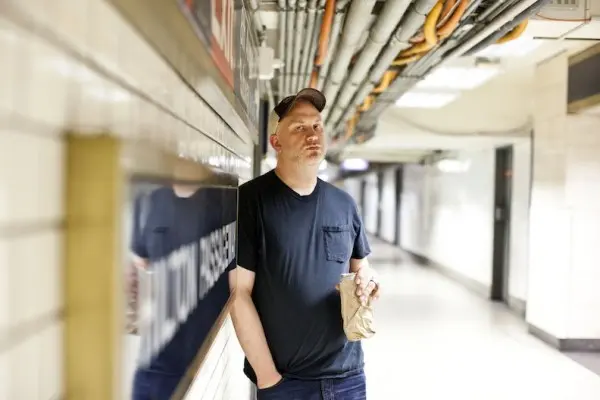
If you are a scholar of Hardcore History, then surely you've read Tony Rettman's NYHC: New York Hardcore 1980–1990. That book was a boon for all you mosh maniacs as it functioned as an oral history of the legendary era of one of punk's most hallowed scenes.
Well, Rettman is continuing his chronicling of the scene with Straight Edge: A Primer. For Straight Edge: A Primer, Rettman is exploring the condition and atmosphere that led to the concept of Straight Edge, and further, Straight Edge evolving into a movement. He plans to focus on bands like Minor Threat, Warzone and Gorilla Biscuits. He'll be running thing whole thing over at Green Room Radio, where he also hosts a weekly podcast, on Saturday.
But, until then, you can read the first two segments below, right now.
STRAIGHT EDGE: A PRIMER
By Tony Rettman
PART ONE: TEENAGE WASTELAND
As the ’70s fell into the ’80s, American youth culture was at a standstill. The promise from the previous decade’s counterculture of a better world through mind-altering substances stalled out when drug taking went from being a transcendental act of defiance to a common act of recreation among teens. Not only that, but there was a musical standstill as well. The hallways of suburban high schools throughout the country still buzzed with the sounds of the Beatles, the Doors, the Who and many other rock bands who were either broken up, dead from over indulgence or passed their prime a long time ago. The promise of a keg party in the woods on the weekend or maybe a joint snuck in before chemistry class was the be-all and end-all of a young person’s existence at the time. The damage from a previous generation’s naive indulgence drifted above their own children like a dank fog. It was the epitome of Teenage Wasteland. At that same moment, the first round of hardcore punk rock spread throughout the country. Detached kids who found the situation of their fellow classmates dismal beyond belief latched on to the raw energy of the music and happily devoured the sounds of California-bred acts such as the Germs, Black Flag and the Dead Kennedys. The only thing that didn’t seem to fit with this recalcitrant, youth-oriented sound was the “Live Fast, Die Young†vibe of nihilism leftover from the school of ’77 British punk. “You had Sid Vicious dying of a heroin overdose and that sent a tone throughout the world on what they thought punk was about.†says Dave Smalley, a punk from Washington, D.C., who would eventually move to Boston to front the early-’80s Boston hardcore unit DYS. “Drinking and drugs was such an established part of rock ’n’ roll, and punk was really no different.â€
PART TWO: OUT OF STEP: THE BIRTH OF STRAIGHT EDGE
In 1981, the hardcore punk scene coming out of Washington, D.C., was being led by a band named Minor Threat who self-released an eight-song debut EP on their own Dischord imprint. Among the curt tunes on the disc was a song named “Straight Edge,†where the band’s vocalist, Ian MacKaye, made a statement on how his non-consumption of drugs or alcohol didn’t make him either less or more of a punk among his peers. In the song, MacKaye proclaimed: “I’m a person just like you / But I’ve got better things to do / Than snort white shit up my nose / Pass out at the shows / I don’t even think about speed / That’s something I just don’t need.†The title of this song—along with a policy MacKaye and his previous band the Teen Idles had seen in place at punk clubs in San Francisco, where underage punks could attend gigs in bars if they brandished a black X on the back of their hands—cemented both the statement and iconography of straight edge.
Kevin Seconds, vocalist for the pioneering Nevada-based hardcore band 7 Seconds, recalls the first time hearing Minor Threat and that song fondly. “When I first heard Minor Threat, I instantly felt justified in how I was feeling as a young hardcore punk rock kid, and it revitalized my love for the music and the spirit of punk rock. Here we were, young pups who didn’t party or want to be like all of our other younger friends who were getting wasted and doing stupid shit with absolutely no purpose. Now, we had kids across the country who felt similarly. It was terribly gratifying and regulatory at the time.â€
Although Minor Threat lit the fuse in the punk scene with this philosophy, neither they nor the D.C. hardcore scene wanted to be known as the purveyors of a puritan lifestyle within the punk scene. “I don’t think there was anyone in D.C. who was actively waving a figurative straight-edge banner,†remembers Jeff Nelson, drummer for Minor Threat. “We were already sick of being asked about it by the time Minor Threat started touring.†Minor Threat bassist Brian Baker drives the point home bluntly by stating: “Minor Threat was just a band, and “Straight Edge†was just a song. It wasn’t like Minor Threat was united in this straight-edge cause. Minor Threat did not brand ourselves as a straight-edge entity. That came after us with the people from Boston.â€